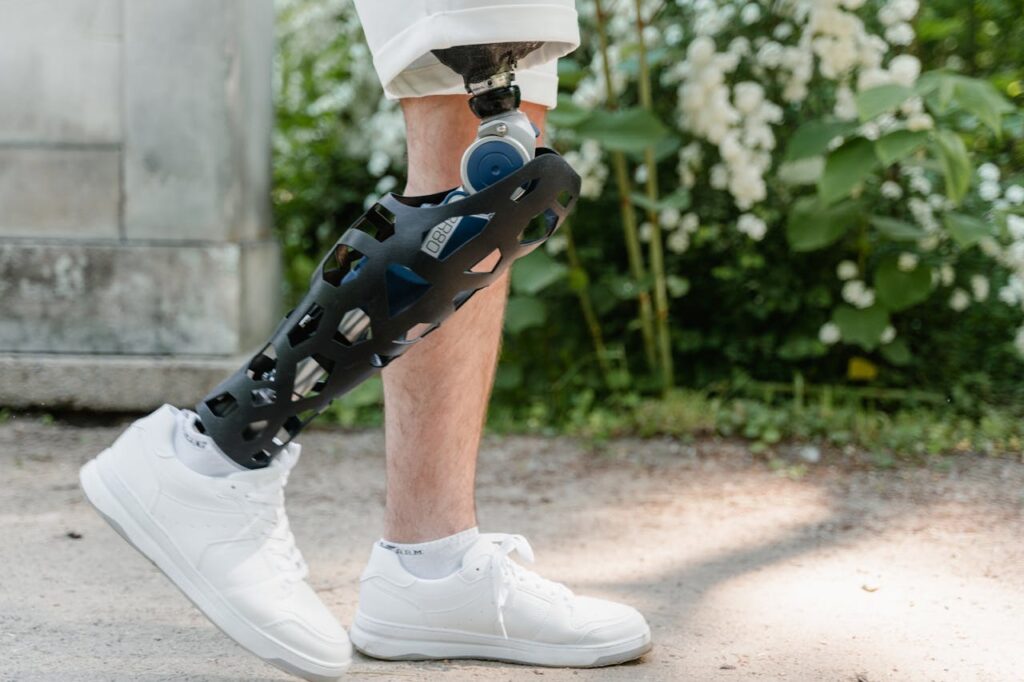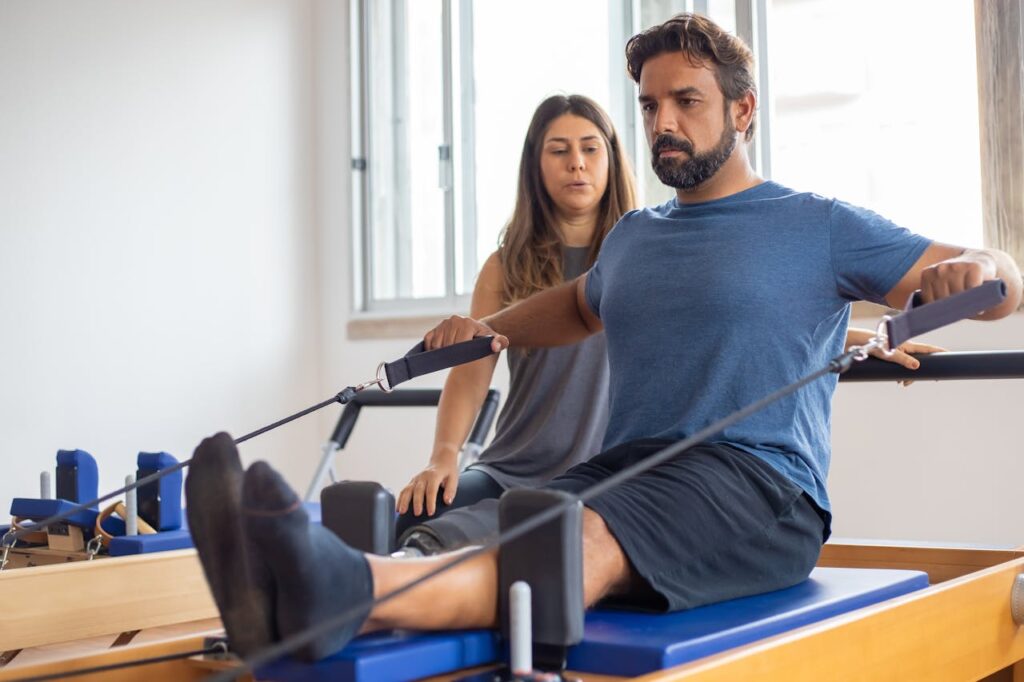Prosthetics have come a long way in helping individuals regain mobility and independence. But for many users, one challenge has remained: navigating water. Whether it’s taking a shower, walking in the rain, or enjoying a swim, the fear of damaging a prosthetic has often restricted everyday freedom. Waterproof prosthetics are changing that narrative. These innovative devices are designed to withstand water exposure, opening up new possibilities for users and enhancing their quality of life.
This article explores the latest advancements in waterproof prosthetics, their benefits, and how they are transforming daily activities. It also provides actionable insights for businesses looking to innovate in this growing field.
Understanding Waterproof Prosthetics
Waterproof prosthetics are engineered to resist water damage, ensuring that they maintain their functionality and structural integrity even after prolonged exposure to moisture. Unlike traditional prosthetics, which can be affected by rust, swelling, or material degradation when exposed to water, waterproof versions are designed with materials and components that withstand these challenges.
The Science Behind Waterproofing
Waterproof prosthetics rely on a combination of advanced materials, precision engineering, and thoughtful design to create devices that resist water penetration. Materials such as high-grade polymers, silicone, and corrosion-resistant metals are carefully selected for their ability to repel moisture and maintain performance over time.
These materials not only prevent water from seeping into the prosthetic’s inner components but also ensure that the device remains lightweight and comfortable for the user.
Sealing mechanisms play a crucial role in enhancing water resistance. For example, silicone gaskets and O-rings are often used to seal joints and connection points, creating a barrier that prevents water ingress.
Businesses can further optimize these designs by testing seals under various conditions, such as prolonged submersion or exposure to high-pressure water, to ensure reliability in real-world scenarios.
Addressing Diverse User Needs
Waterproof prosthetics cater to a wide range of users, each with unique needs and preferences. Some individuals may require a prosthetic that can withstand daily exposure to water during routine tasks like showering or washing dishes, while others may seek a device suitable for high-impact activities such as swimming or surfing.
Recognizing these varying use cases is essential for businesses looking to create versatile and user-focused solutions.
For instance, users engaged in recreational water activities often prioritize features like streamlined shapes, enhanced flexibility, and attachments designed specifically for aquatic environments.

On the other hand, individuals seeking waterproof prosthetics for daily use may value comfort, ease of maintenance, and discreet designs that integrate seamlessly into their routine.
Businesses that tailor their products to these distinct needs can capture a broader market while demonstrating a deep understanding of user priorities.
Enhancing Longevity and Performance
Durability is a cornerstone of waterproof prosthetics, as these devices are exposed to challenging conditions that can accelerate wear and tear. Factors such as chlorine in swimming pools, saltwater from oceans, and fluctuating temperatures can affect the lifespan of a prosthetic if not addressed during the design phase.
To enhance longevity, businesses can incorporate protective coatings or treatments that resist corrosion and degradation. For example, hydrophobic coatings can prevent water from adhering to surfaces, reducing the risk of damage over time.
Additionally, designing components that are easy to clean and maintain ensures that users can preserve their prosthetics’ functionality with minimal effort.
Designing for Seamless Integration
Waterproof prosthetics must integrate seamlessly into users’ lives, providing a natural and intuitive experience. This requires thoughtful attention to aesthetics, ergonomics, and functionality.
For example, ensuring that the prosthetic matches the user’s skin tone or complements their natural movement can help foster a sense of confidence and normalcy.
Moreover, businesses can explore innovative designs that balance form and function. By incorporating features such as adjustable straps for a secure fit or modular attachments for specific activities, companies can create prosthetics that adapt to the user’s needs without sacrificing comfort or usability.
Strategic Opportunities for Businesses
The demand for waterproof prosthetics is steadily increasing as users seek solutions that align with their active and dynamic lifestyles. For businesses, this presents a significant opportunity to innovate and differentiate their offerings.
Prioritizing user feedback during the design and testing phases can lead to products that address unmet needs and exceed expectations.
In addition, collaborating with healthcare providers, rehabilitation centers, and user communities can provide valuable insights into how waterproof prosthetics are used in everyday life. These partnerships not only inform product development but also build trust and credibility within the industry.
Materials That Make Waterproof Prosthetics Possible
The success of waterproof prosthetics lies in the materials used. These devices must combine strength, flexibility, and water resistance to function effectively. Over the years, advancements in material science have introduced components that not only protect against water but also enhance overall performance.
High-Performance Polymers
Polymers like polyethylene and polypropylene are widely used in waterproof prosthetics due to their durability and water resistance. These materials are lightweight, making the prosthetic easier to wear for extended periods.
They also resist corrosion, ensuring the device maintains its structural integrity even after repeated exposure to water.
Advanced polymers are often used in the sockets and joints of waterproof prosthetics, where flexibility and resilience are crucial. These materials adapt to the user’s movements while providing a secure fit, preventing water from entering sensitive areas.

Stainless Steel and Titanium
Metal components in prosthetics, such as joints and connectors, must resist rust and corrosion to remain functional in wet conditions. Stainless steel and titanium are ideal for this purpose. These metals offer excellent strength-to-weight ratios, ensuring that the prosthetic is both robust and lightweight.
For businesses, investing in high-quality metals for waterproof prosthetics is essential to ensure longevity and user satisfaction. Highlighting the use of these materials in marketing efforts can also reassure users about the reliability of the product.
Waterproof Seals and Coatings
Waterproof prosthetics often include seals and coatings that create a barrier against moisture. Silicone seals, for example, are commonly used around joints and connections to prevent water ingress.
Additionally, advanced coatings like hydrophobic sprays or rubberized finishes enhance water resistance while protecting the device from wear and tear.
These features are particularly important for users who engage in activities like swimming or showering, where prolonged water exposure is expected. Businesses that prioritize effective sealing mechanisms in their designs can enhance the durability and usability of their products.
Engineering Solutions for Everyday Activities
Waterproof prosthetics are not just about surviving water exposure—they are about thriving in everyday situations where water is present. From functional designs to innovative features, these devices are transforming how users interact with their environment.
Shower-Ready Designs
One of the most common challenges for prosthetic users is taking a shower. Traditional prosthetics often require removal or protection to prevent water damage, creating inconvenience and risk.
Waterproof prosthetics address this issue with designs that allow users to step into the shower without worry.
These prosthetics are equipped with slip-resistant soles, ensuring stability on wet surfaces. The use of non-porous materials prevents water absorption, making the device easy to dry and maintain.
For businesses, focusing on shower-friendly designs can address a significant pain point for users, improving their daily routines.
Freedom in Recreation
Recreational activities like swimming, paddleboarding, or simply wading in a pool can be daunting for individuals with traditional prosthetics. Waterproof prosthetics remove these barriers, allowing users to enjoy water-based activities with confidence.
Devices designed for recreational use often feature streamlined shapes and materials that minimize drag in water. Some models even include interchangeable attachments for specific activities, such as fins for swimming or reinforced soles for walking on rocky beaches.
These features not only enhance functionality but also promote inclusivity, ensuring users can participate in activities alongside their peers.

Everyday Freedom with Waterproof Prosthetics
Waterproof prosthetics are transforming more than just recreational opportunities—they are revolutionizing how users approach everyday life. From navigating rain-soaked streets to spontaneous adventures, these devices empower users to embrace experiences without hesitation or concern for their prosthetic’s durability.
Navigating Wet Weather
For users in regions with frequent rain or high humidity, waterproof prosthetics provide a level of freedom that was previously difficult to achieve.
Traditional prosthetics, made with materials prone to rust or swelling, often required protective covers or adjustments in response to weather changes. Waterproof prosthetics eliminate these concerns by offering reliable performance in all conditions.
The inclusion of water-resistant joints and sealed connections ensures that water cannot penetrate critical areas of the prosthetic, preventing damage and maintaining smooth functionality.
Non-slip components, such as treaded soles, also enhance safety on wet surfaces, reducing the risk of falls. For businesses, emphasizing weather-resistant features can appeal to users in climates where rain is a constant part of life.
Spontaneous Lifestyle Choices
One of the most profound benefits of waterproof prosthetics is the freedom to engage in activities without planning or precaution. Users no longer need to worry about the limitations of their device when visiting a beach, stepping into a puddle, or playing with children at a splash park.
This sense of spontaneity enhances emotional well-being, enabling users to live in the moment and participate fully in their surroundings.
For manufacturers, designing prosthetics that integrate seamlessly into users’ active lives can create a strong emotional connection with their products, fostering brand loyalty and trust.

Addressing Challenges in Waterproof Prosthetic Design
While waterproof prosthetics offer numerous advantages, their development and manufacturing come with unique challenges. Addressing these effectively requires a commitment to research, innovation, and user-centered design.
Balancing Durability and Comfort
Waterproof prosthetics must withstand prolonged exposure to water without compromising comfort. Achieving this balance requires careful material selection and engineering.
For instance, while metals like stainless steel are resistant to corrosion, they must be combined with lightweight polymers to reduce overall weight and enhance wearability.
For businesses, incorporating ergonomic designs and testing prototypes extensively can ensure that the final product meets user expectations for both comfort and performance.
Offering customization options, such as adjustable fits and personalized attachments, can further enhance the user experience.
Simplifying Maintenance
Waterproof prosthetics are exposed to elements like chlorine, saltwater, and debris, which can accumulate and affect performance over time. Simplifying maintenance is crucial to ensuring the long-term usability of these devices.
Designs that prioritize easy cleaning, such as smooth surfaces and removable components, make it simple for users to maintain their prosthetics. Including user-friendly guides and offering maintenance kits can also enhance satisfaction and reduce the likelihood of damage.
Businesses that proactively address maintenance needs can differentiate themselves by demonstrating a commitment to user convenience and care.
The Role of Technology in Waterproof Prosthetics
Advanced technology is playing a pivotal role in enhancing the design, functionality, and accessibility of waterproof prosthetics. From digital modeling to smart sensors, these innovations are creating devices that are not only water-resistant but also smarter and more adaptive.
3D Printing for Precision and Customization
3D printing has become a game-changer in the prosthetics industry, enabling manufacturers to create highly customized designs with precision.
For waterproof prosthetics, 3D printing allows for intricate sealing mechanisms and tailored fits that enhance water resistance and user comfort.
This technology also reduces production costs and timelines, making waterproof prosthetics more accessible to a broader audience. For businesses, leveraging 3D printing to produce modular designs can further enhance scalability while maintaining personalization for each user.

Smart Features for Enhanced Functionality
Integrating smart technology into waterproof prosthetics adds an extra layer of functionality. Sensors embedded in the device can monitor environmental conditions, such as water pressure or temperature, and adjust the prosthetic’s settings accordingly.
For example, a smart waterproof prosthetic foot could adapt its grip and stability when transitioning from dry surfaces to wet terrain. Additionally, mobile apps that connect to the prosthetic can provide users with real-time data on performance and maintenance needs, ensuring optimal functionality at all times.
Businesses that invest in smart technology can position themselves at the forefront of innovation, offering products that appeal to tech-savvy users seeking advanced solutions.
Expanding Accessibility Through Cost-Effective Solutions
One of the primary challenges in the adoption of waterproof prosthetics is their cost. Advanced materials and features often make these devices more expensive than traditional prosthetics, limiting access for some users. Businesses have an opportunity to bridge this gap by prioritizing cost-effective solutions without compromising quality.
Modular Designs for Affordability
Modular prosthetic systems allow users to invest in a base model and add waterproof components or features as needed. This approach reduces upfront costs while giving users the flexibility to upgrade their prosthetics over time.
For instance, a user might start with a standard prosthetic and later purchase waterproof attachments for recreational activities. Businesses that offer modular designs can cater to a wider range of users, ensuring their products are accessible while remaining customizable.
Collaborations with Healthcare Providers
Partnering with healthcare providers and insurance companies can also make waterproof prosthetics more affordable.
By integrating these devices into rehabilitation programs and securing coverage options, businesses can expand access to users who may not have considered them otherwise.
Educating healthcare professionals about the benefits of waterproof prosthetics can further enhance adoption, ensuring that users receive informed recommendations during the fitting process.
Empowering Users Through Waterproof Prosthetics
Waterproof prosthetics are not just technical advancements—they represent empowerment and the ability to live life fully. For users, these devices signify independence and the freedom to engage in activities previously thought impossible. For businesses, creating waterproof prosthetics is an opportunity to contribute meaningfully to users’ lives while fostering innovation and growth in the prosthetics industry.
Restoring Confidence
One of the most profound impacts of waterproof prosthetics is the restoration of confidence in users. Simple acts like bathing independently or walking confidently in the rain may seem small, but they carry immense emotional weight. These everyday freedoms improve self-esteem and help users feel less constrained by their physical limitations.
For children, in particular, waterproof prosthetics can make a significant difference. Being able to play in the water with peers or participate in activities without restrictions reduces feelings of exclusion.
Businesses can focus on designing waterproof prosthetics tailored for young users, incorporating playful designs and vibrant colors to enhance their appeal.
Enhancing Quality of Life
The benefits of waterproof prosthetics extend beyond physical functionality. They contribute to a better quality of life by enabling users to participate in recreational and therapeutic activities.
For individuals undergoing aquatic therapy, waterproof prosthetics allow for consistent and effective rehabilitation, improving mobility and strength.
Businesses that highlight these holistic benefits in their marketing and educational materials can create a deeper emotional connection with users and their families.
By showcasing real-life stories of individuals who have experienced life-changing improvements through waterproof prosthetics, companies can inspire trust and demonstrate their commitment to making a difference.
The Future of Waterproof Prosthetics
As technology continues to advance, the potential for waterproof prosthetics is boundless. Emerging trends in materials, design, and smart technology are set to make these devices even more efficient, user-friendly, and accessible. Businesses that embrace these innovations can position themselves at the forefront of this evolving field, setting new standards for functionality and usability.
Biodegradable Waterproof Materials
Sustainability is becoming a priority across industries, and prosthetics are no exception. Research into biodegradable and eco-friendly materials is opening doors to waterproof prosthetics that not only perform exceptionally but also align with environmental values.
For example, materials derived from plant-based polymers could replace traditional plastics, offering water resistance while reducing the environmental footprint.
Businesses that invest in sustainable solutions can appeal to eco-conscious consumers and establish themselves as leaders in responsible innovation.
Neural Integration for Enhanced Control
The integration of neural technology into waterproof prosthetics is a promising development. Neural interfaces allow prosthetics to communicate directly with the user’s nervous system, enabling more intuitive control.
For waterproof prosthetics, this technology could enhance the user experience in water-based environments. For instance, a prosthetic hand with neural integration might adapt its grip automatically based on the resistance felt in water.
These advancements offer businesses an opportunity to pioneer devices that combine cutting-edge functionality with user-centered design.
Strategic Recommendations for Businesses
To succeed in the growing market for waterproof prosthetics, businesses must adopt a strategic approach that prioritizes innovation, accessibility, and user satisfaction.
Investing in Research and Development
Continuous investment in R&D is essential for staying ahead in this competitive field. Exploring new materials, refining designs, and integrating smart technologies can help businesses create products that stand out.
Collaboration with academic institutions and technology firms can accelerate innovation and reduce development costs.

Building Strong User Relationships
Understanding the needs and preferences of users is crucial for designing effective waterproof prosthetics. Engaging with users through focus groups, surveys, and pilot programs provides valuable insights that can inform product development.
Additionally, offering excellent customer support and resources—such as maintenance guides, user forums, and instructional videos—ensures a positive experience and builds brand loyalty.
Expanding Awareness
Educating both users and healthcare providers about the benefits of waterproof prosthetics is key to driving adoption. Businesses can achieve this through targeted marketing campaigns, partnerships with rehabilitation centers, and participation in industry events.
Highlighting the practical and emotional benefits of these devices—such as independence, confidence, and improved quality of life—can resonate deeply with potential customers.
Conclusion
Waterproof prosthetics are more than a technical innovation—they are a gateway to freedom and inclusivity. By enabling users to navigate water-based environments with confidence, these devices open doors to new possibilities and enrich lives.
For businesses, the opportunity lies not only in creating durable, high-performing products but also in understanding the profound emotional and practical impact these prosthetics have on users. By embracing innovation, prioritizing user needs, and addressing accessibility challenges, companies can lead the way in transforming how prosthetics are designed and experienced.
As the field continues to evolve, waterproof prosthetics will remain at the forefront of empowering users to live without limits. For those in the industry, the challenge is clear: to innovate boldly, care deeply, and create solutions that truly make a difference.



